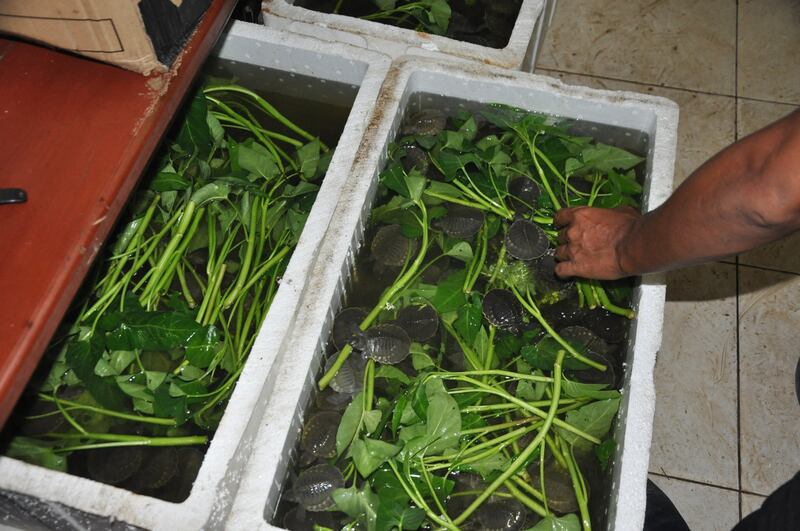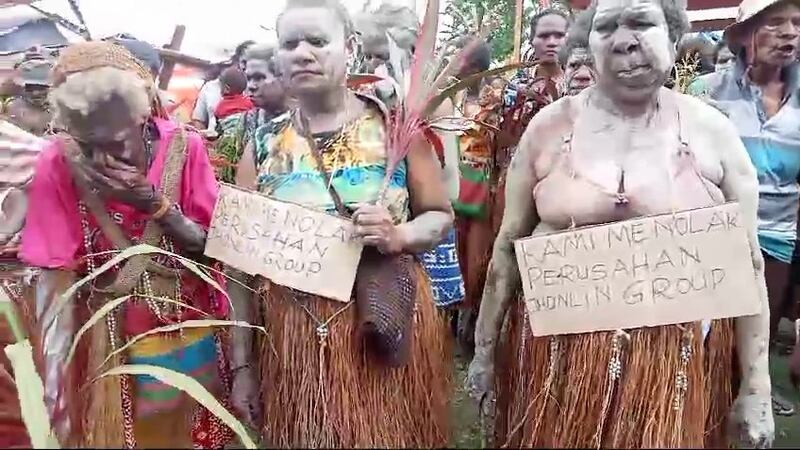Indonesia’s military is taking a leading role in plans to convert more than 2 million hectares of wetlands and savannah into rice farms and sugarcane plantations in a part of the conflict-prone Papua region that conservationists say is an environmental treasure.
The military’s involvement has added to perceptions it is increasingly intruding into civilian areas in Indonesia and prompted a warning it will bring bloodshed to Merauke, the region slated to become a giant food estate. It’s an area of easternmost Indonesia that has largely avoided violence during the decades-long armed conflict between Indonesia and indigenous Papuans seeking their own state.
The plans are part of the government’s ambitions for the nation of 270 million people to achieve food and energy self-sufficiency. They highlight the tension globally between the push for economic development in lower-income countries and protection of the diminishing number of pristine ecosystems.
Taken together, the sugarcane and rice projects for Merauke represent at least a fifth of a 10,000 square kilometer (38,600 square mile) lowland known as the TransFly that spans Indonesia and Papua New Guinea. Its name comes from the Fly River – a squiggle on the otherwise straight line on the map that marks the border of the two countries on the island of New Guinea.
The great expanse of wetlands, grasslands and pockets of tropical rainforest in the south of the island is “globally outstanding,” said Eric Wikramanayake, a conservation biologist who wrote about its significance for a book on conservation regions in Asia.
Researchers say it is home to half of the bird species found in New Guinea including about 80 that exist nowhere else and other endemic animals such as the pig-nosed turtle and cat-like carnivorous marsupials. The World Wildlife Fund, or WWF, has called it a “global treasure” and a proposed World Heritage listing says no other place in the region compares to it, including the famous Kakadu national park in northern Australia.
“If you were to convert a lot of the TransFly into agriculture then it’s going to change the conservation assessment, it will make it much more threatened,” Wikramanayake said.
“There is going to be some impact and those impacts, it’s like opening the can of worms” in paving the way for further development, he said.

For Ahmad Rizal Ramdhani, the major-general who heads Indonesia’s National Food Security Taskforce, the area targeted for development is swamps that should be converted to agriculture to realize their “extraordinary” fertile potential.
He told a 40-minute long podcast with state broadcaster Radio Indonesia in August that the 1 million-hectare rice component of the agricultural plans is funded by the government and overseen by the military and agriculture ministry. The sugar cane plantations and a related bioethanol industry are funded by private investors, he said.
Wearing an indigenous Papuan headdress, Ramdhani said he envisioned that Papuans would ask “Mr. TNI” – the initials of the name of the Indonesian military – for help with cultivating their customary lands.
Sacred and conservation areas would be protected and the land would remain in the ownership of indigenous Papuans, he said.
“To the people of Papua, especially those in Merauke, there is no need to worry and doubt, there is no need to be afraid,” Ramdhani said.
In seemingly contradictory remarks, Ramdhani said the conversion to rice paddy needed to be carried out in three years to ensure food security, but rice would also be exported – to Pacific island countries and Australia because it’s too expensive to send it to Java, Indonesia’s most populated island.
Analysis of land-use maps shows areas designated for rice overlap with conservation areas, indigenous sacred places and ancestral trails and hunting grounds, said Franky Samperante, director of Indonesian civil society organization Pusaka.
Pusaka said in a report in September that more than 200 excavators had begun clearing wetlands, customary forests and other lands belonging to the Malind Makleuw indigenous people in Ilwayab, Merauke.

Members of the community protested against the rice project during a Sept. 24 reception for Indonesian officials, video shows. Women with faces caked in white mud to symbolize grief wore cardboard signs around their necks that said "We reject Jhonlin Group company" – an Indonesian conglomerate that is reportedly a key part of the agricultural projects.
Earlier government and military-led attempts to develop agriculture in Merauke, including in the last decade, led to land grabs and other problems.
‘Risk of resentment’
The military’s leadership of the rice program adds to perceptions it is increasingly intruding into civilian areas, according to three Indonesian security researchers.
The large agricultural projects could fuel pro-independence sentiment and grievances over environmental destruction, said military analyst Raden Mokhamad Luthfi at Al Azhar University Indonesia.
"There’s a real risk that the project could spark new resentment from OPM [Organisasi Papua Merdeka-Free Papua Movement], who may view it as further evidence of inequality, injustice, and environmental harm faced by Papuans," he told BenarNews, a RFA-affiliated online media organization.
Justification for the military’s role in the Merauke project, Luthfi said, is based on the concept of food security outlined in Indonesia’s 2015 defense white paper.
Officers at the army staff college perceived a security threat from possible food shortages in the future caused by climate change and population growth, he said. However, the white paper also said food security efforts should be led by civilian ministries.
Hipolitus Wangge, a researcher at Australian National University, said the military silenced discontent among Papuans during a failed program last decade to make Merauke into a major center of food production.
“We should expect more discontent, even bloodshed in Merauke in the next five years,” he told Radio Free Asia.
RELATED STORIES
[ Rising waters have ravaged rainy season crops throughout AsiaOpens in new window ]
[ In Southeast Asia, protecting the environment is its own hazardOpens in new window ]
[ Indonesian stingray marks first marine fish extinction on IUCN Red ListOpens in new window ]
The Indonesian government’s development plans for the region and armed conflict were likely behind the demise of a once ambitious plan to protect the TransFly environment.
WWF’s Indonesia and Papua New Guinea chapters made a concerted attempt in the early-to-mid 2000s to develop a conservation plan and expand protected areas. Within a few years, the effort had foundered.
At the time, the WWF waxed lyrical about the environmental significance of the TransFly but the conservation group’s Indonesian chapter now says it “recognizes the importance of national strategic projects, such as the Food Estate initiative in Merauke, in addressing Indonesia’s food security challenges.”
The conservation program ended in 2016 because of insecurity in Papua and lack of resources, WWF Indonesia spokeswoman Diah Sulistiowati told RFA.
“We understand that the government prioritizes this [agricultural] development to meet the growing demand for food and to support national food security goals,” she said.
WWF Indonesia is helping to ensure development of the TransFly region respects “rich ecological and cultural values,” Sulistiowati said, through its past recommendations for protection of high conservation value forests, cultural heritage sites and areas crucial to indigenous communities.
A lesser heralded aspect of the TransFly’s importance is that it’s one of a diminishing number of wetland stopovers for migratory birds that make epic journeys along a millenia-old Asian “flyway” stretching from Alaska to New Zealand.
“Whatever few wetlands and bird habitats that are used by these birds should be conserved,” said Wikramanayake, the conservation biologist. “There could be some sort of tipping point that causes the flyway to collapse.”
Edited by Mike Firn.
